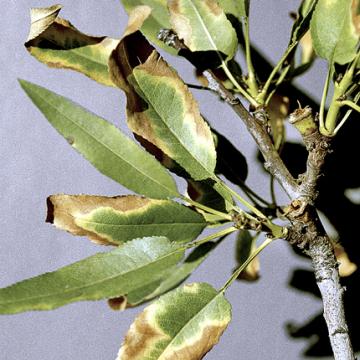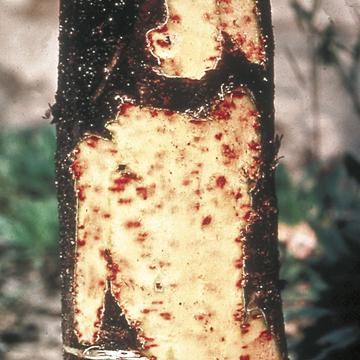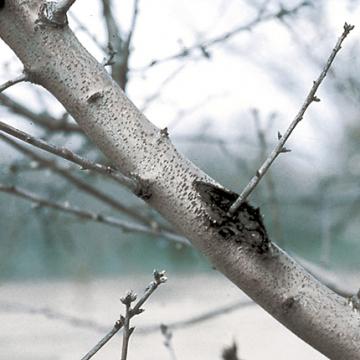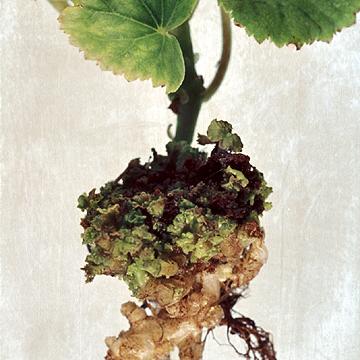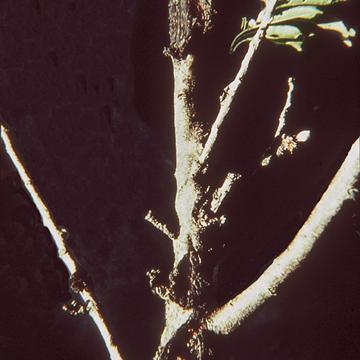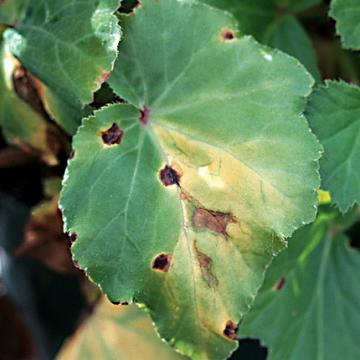DISEASE: Almond leaf scorch
HOST: Almond
Light brown necrotic (scorched) areas on curling leaves.
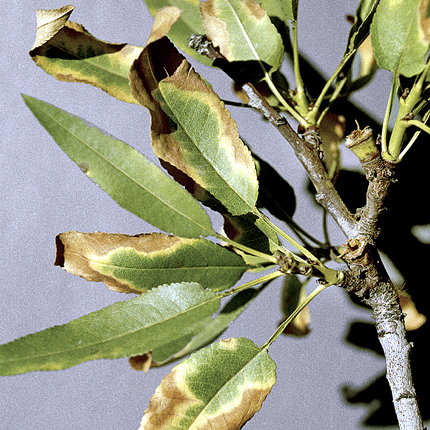
Almond leaf scorch | Almond
DISEASE: Almond leaf scorch
HOST: Almond (Prunus dulcis)
PATHOGEN: Xylella fastidiosa
SOURCE: W. Sinclair
DISEASE: Almond leaf scorch
HOST: Almond
Dying almond trees with scorched appearance. Initial symptoms are marginal chlorosis, usually late in the year. Scorch often is first noted at leaf tips, symptoms worsen, and terminal branches may die.
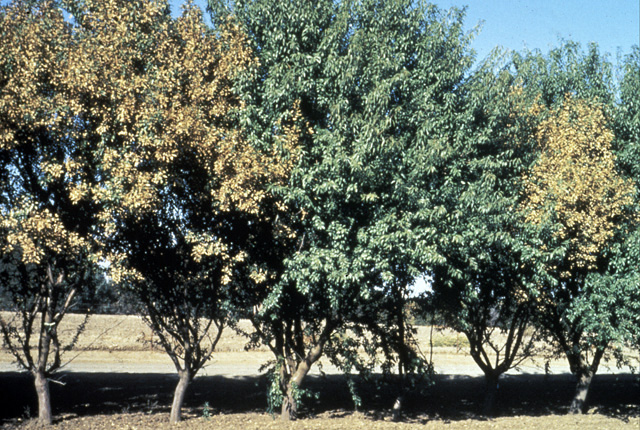
Almond leaf scorch | Almond
DISEASE: Almond leaf scorch
HOST: Almond (Prunus dulcis)
PATHOGEN: Xylella fastidiosa
SOURCE: R. Davis, M. Davis
DISEASE: Bacterial canker
HOST: Almond
Infected tissues with reddish necrotic spots, a key diagnostic symptom for the disease. Spots and streaks are commonly seen when bark is removed.
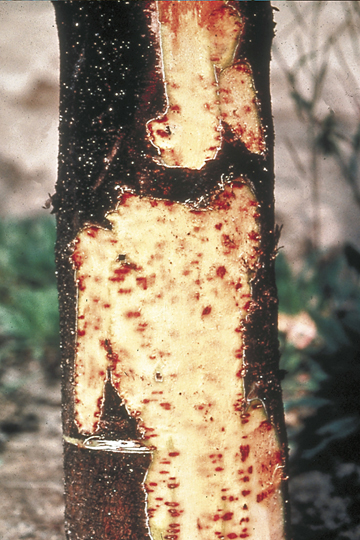
Bacterial canker | Almond
DISEASE: Bacterial canker
HOST: Almond (Prunus dulcis)
PATHOGEN: Pseudomonas syringae pv. syringae
SOURCE: B. Teviotdale
DISEASE: Bacterial canker
HOST: Almond
Diamond-shaped canker on infected limb. Such cankers are common on small limbs and spurs.
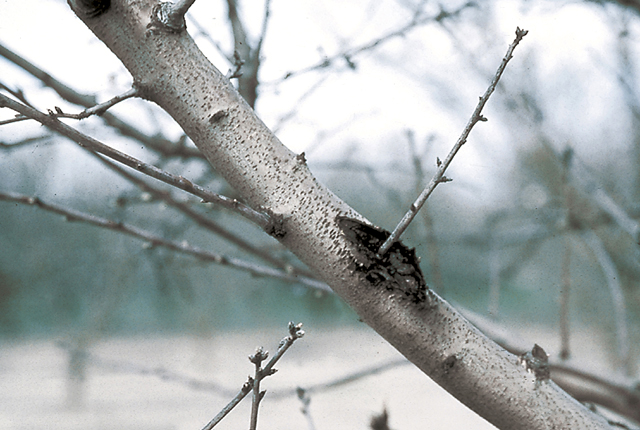
Bacterial canker | Almond
DISEASE: Bacterial canker
HOST: Almond (Prunus dulcis)
PATHOGEN: Pseudomonas syringae pv. syringae
SOURCE: B. Teviotdale
DISEASE: Bacterial fasciation (Leafy gall)
HOST: Begonia
Leafy gall on stem.
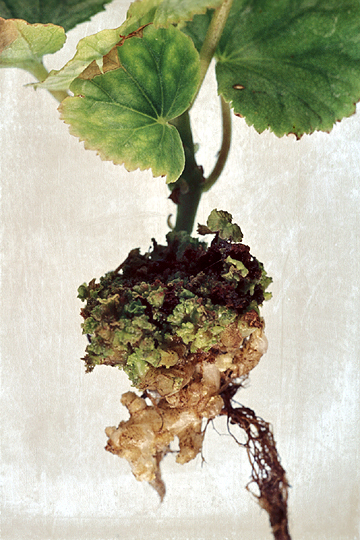
Bacterial fasciation (Leafy gall) | Begonia
DISEASE: Bacterial fasciation (Leafy gall)
HOST: Begonia (Begonia sp.)
PATHOGEN: Rhodococcus fascians
SOURCE: M. Geesteranus, J. van der Wolf
DISEASE: Bacterial hyperplastic canker
HOST: Almond
Diseased tree with multiple cankers. Margins of cankers are rough, soft, cheesy, dark brown, and have scalloped water-soaked spots that turn brown. Multiple cankers may girdle and kill small twigs.
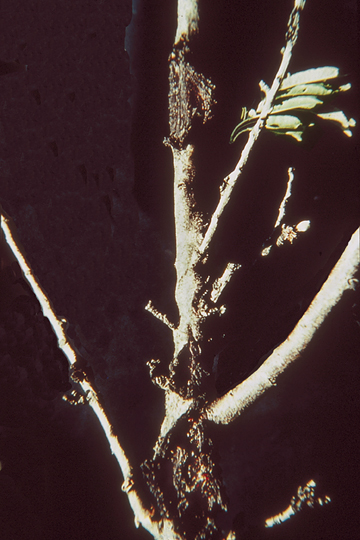
Bacterial hyperplastic canker | Almond
DISEASE: Bacterial hyperplastic canker
HOST: Almond (Prunus dulcis)
PATHOGEN: Pseudomonas amygdali
SOURCE: P. Psallidas
DISEASE: Bacterial leaf spot (Blight)
HOST: Beet
Seedling blight stage of the disease.
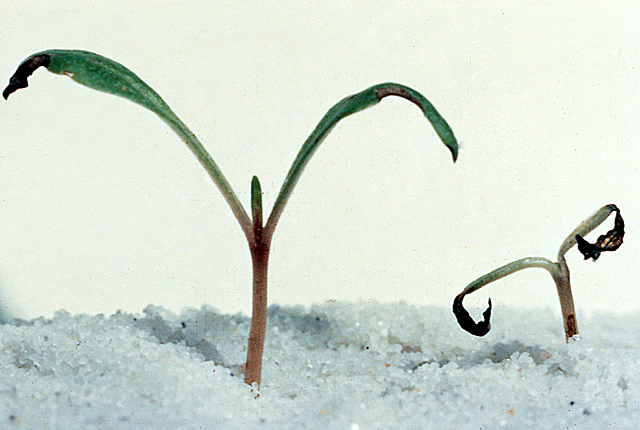
Bacterial leaf spot (Blight) | Beet
DISEASE: Bacterial leaf spot (Blight)
HOST: Beet (Beta vulgaris)
PATHOGEN: Pseudomonas syringae pv. aptata
PATHOGEN SYNONYM: Pseudomonas aptata
SOURCE: C. Schneider
DISEASE: Bacterial leaf spot (Blight)
HOST: Beet
Leaves with dark brown necrotic regions and streaks; two petioles also are infected.
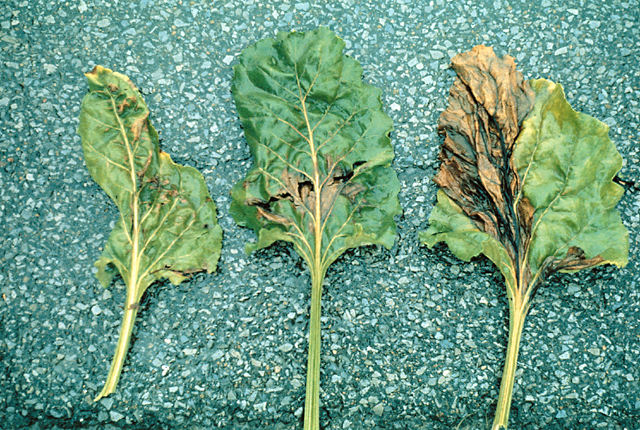
Bacterial leaf spot (Blight) | Beet
DISEASE: Bacterial leaf spot (Blight)
HOST: Beet (Beta vulgaris)
PATHOGEN: Pseudomonas syringae pv. syringae
SOURCE: C. Schneider
DISEASE: Bacterial leaf spot (Blight)
HOST: Begonia
Initial symptoms appear as small, blisterlike lesions. As lesions age, they enlarge, producing broad patches of necrotic leaf tissue.
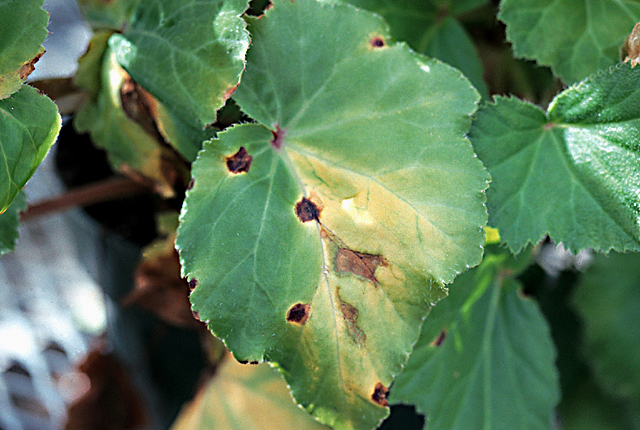
Bacterial leaf spot (Blight) | Begonia
DISEASE: Bacterial leaf spot (Blight)
HOST: Begonia (Begonia sp.)
PATHOGEN: Xanthomonas axonopodis pv. begoniae
PATHOGEN SYNONYM: Xanthomonas campestris pv. begoniae
SOURCE: APS


